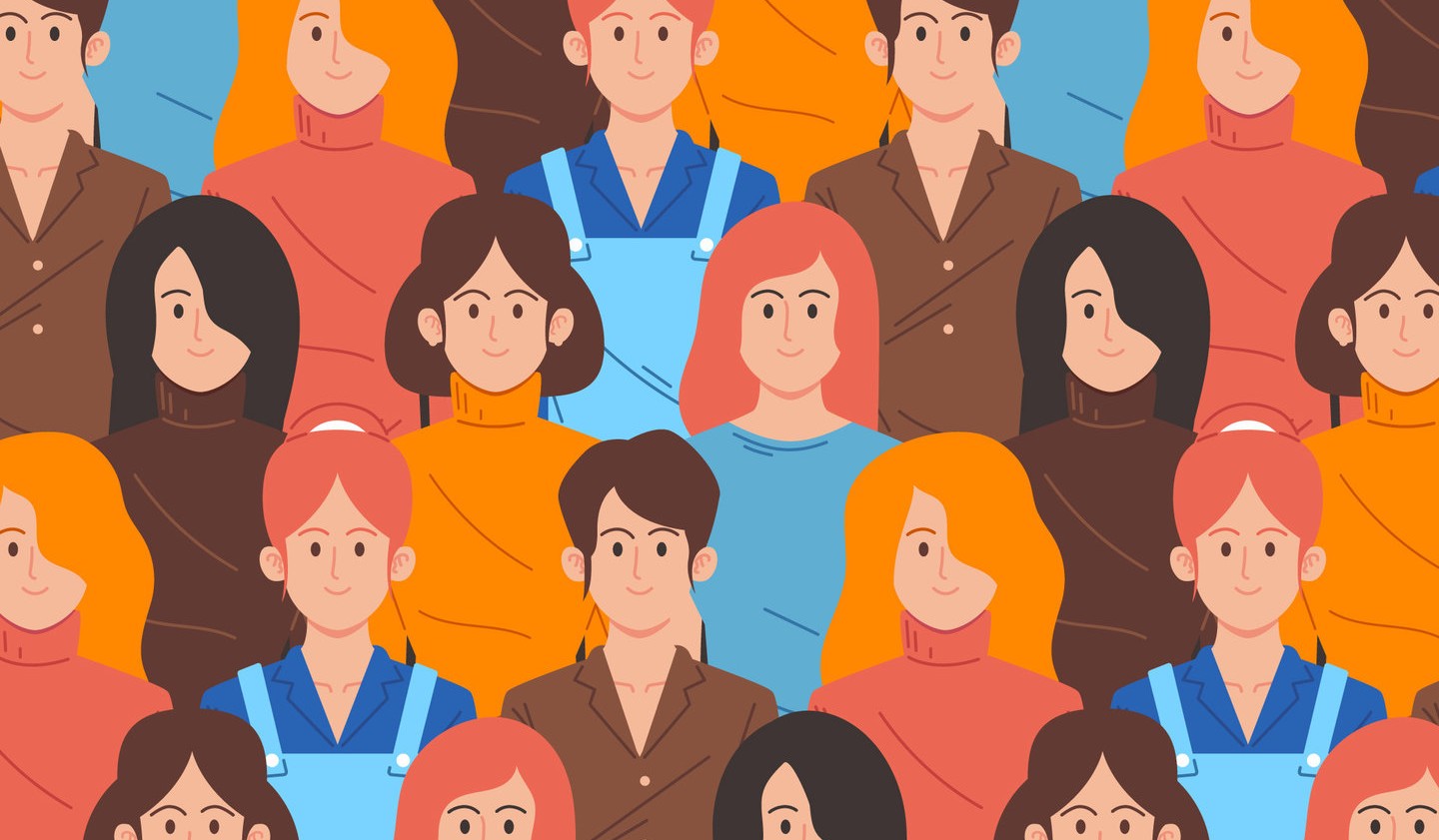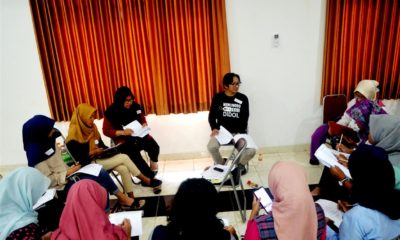Opinion
Perpetrators of Sexual Harassment do not Discriminate
Published
4 years agoon
By
Mitra WacanaBy : Ganis Haryanti Putri
Sexual harassment can be experienced by anyone and anywhere, by men, women, children and parents. However, in reality, sexual harassment is more often experienced by children and women. This can be seen from various mass media reports on cases of sexual harassment. Because of this, cases of sexual abuse of children and women, become an important topic to immediately decrease the numbers. In Indonesia, women and children are vulnerable to various forms of sexual harassment, both in the public and domestic spheres. Some sexual abuse experienced by women and children is not resolved because of the lack of reports from victims.
This is partly due to the perception in society, both in general and on the part of the woman herself, that the sexual harassment she experienced was better kept for herself. Women sometimes hide the acts of sexual harassment they experience for various reasons, ranging from threats from the perpetrators, to the wishes of the victims themselves who do not want their experience to be known by others who may shame her. Sexual harassment that has been, is, or may even be experienced by women and children is a social problem that needs attention.
Sexual abuse experienced by children can result in a loss of self-confidence, fear, and can disturb their peace of mind. This can hamper the process of development itself and will certainly affect their future. It is easy to find cases of sexual harassment experienced by women and children in the mass media.
Acts of sexual abuse experienced by children can be categorized as crimes against children. Violence against children ranges from neglect of children to acts of rape and murder. All acts of sexual abuse experienced by children are recorded in their subconscious mind and carried into adulthood, and continue to haunt them throughout their lives. Perpetrators of sexual harassment may be anyone, in some cases sexual harrassment can even be committed by people who are seen as educated people, have a high social status, and are respected by the community. Is it evidenced that one cannot guarantee someone not to commit sexual harassment.
In some cases, sexual abuse experienced by children even occurs in the school environment. Teachers and school principals who are supposed to be role models and have a duty to protect children and all school members do not carry out their roles properly. Schools, as a means to gain knowledge and socialization skills, as well as internalize values and norms, aren’t generally negatively stigmatised as dangerous places for children. School as a “second home” for children is expected to be able to provide a sense of security and comfort for children as they should at home. In reality, no one can guarantee that all places are safe for children to move and grow and develop without any fear of sexual harassment that could threaten them.
To be able to reduce acts of sexual harassment of children and women requires collaboration from various parties. Socialization and cooperation is needed within the community to provide education about sexual harassment, so as to not create perceptions that make victims feel uncomfortable in reporting on all forms of sexual harassment they experienced. In addition, further action is needed through legal channels to provide a deterrent effect for the perpetrators.
Some people may have the view that harassment against women is common in public places. Therefore, there are many suggestions or appeals that women should not go out at night alone, with the justification that it is to protect women from acts of sexual harassment. In fact, sexual harassment experienced by women is not only found outside the home or in public places. Sexual harassment of women and children does not discriminate between what women look like, such as looking at clothes, religion, age and race, and further, it does not look at the home or outside the home. Harassment against women cannot be prevented by prohibiting women from going out alone. It is clear that the problem is with the crime of the offender and there is no guarantee of security for women or children.
Coordinator : Ruly
Editor : Arif Sugeng Widodo
Biodata Penulis
Full name : Ganis Haryanti Putri.
Jenis Kelamin : Female.
Agama : Islam.
Email : ganis217@gmail.com.
Organizational experience
- Staff Divisi Diskusi Censor Fisip UNS 2016/2017
- Staff Divisi Diskusi Censor Fisip UNS 2017/2018
- Koordinator Sie Perkap Censorfest 3.0 2017
- Staff Sie Sekretaris Censorfest 4.0 2018
- Staff Sie Sekhumjin Seminar Nasional dan Konferensi Sosiologi Perkotaan 2018.
You may like
News
Are American and Indonesian Women Really So Different?
Published
4 years agoon
7 February 2020By
Mitra Wacana
by Jacqueline Lydon – Volunteer internship Program Mitra Wacana
After growing up in the U.S., now living in Indonesia for about five months and interning at Mitra Wacana for three, I’ve been surprised at the similarities between conditions for women in the two countries.
On the surface level, women in the U.S. and Indonesia may seem like polar opposites.
When comparing the two, people tend to focus on the behaviors and appearances of women. Women are judged for how they dress, how they act, and how independent they are, for example.
Americans might judge Indonesian women for dressing conservatively, staying in the domestic sphere, and being seemingly submissive to their husbands. Meanwhile, Indonesians might judge American women for not covering their bodies, being too sexual, not focusing on domestic roles, or being too loud and demanding.
What I’ve noticed since being here is first, that these differences are less noticeable than I had thought, and second, that they seem to stem from differences in cultures and societal norms. There are different ways of understanding gender and gender roles, yet women in both America and Indonesia want safety, respect, and to have a voice.
There are many similarities between women’s behaviors and struggles in the two countries.
- 51.9% of Indonesian women are in the workforce, compared to 57.1% of U.S. women
- 17.4% of the Indonesian parliament is female, compared to 23.9% of the U.S. legislature
- The first Indonesian woman was elected president in 2001, while a woman has never yet been president in the U.S.
- The first female supreme court justice in Indonesia, Sri Widoyati Wiratmo Soekito, was inaugurated in 1968, while the first woman to join the U.S. supreme court was Sandra Day O’Connor in 1981, about 15 years later.
There are many issues – from sexual harassment to rape – that have a widespread impact on women in both countries, but it’s hard to have accurate statistics because many women do not or can not report these incidents. But based on what is reported, it’s clear that these are major issues in both countries.
- 3 out of 5 Indonesian woman and 81% of American women have experienced sexual harassment
- 15% of Indonesian women and more than 1 in 3 American women report being a victim of sexual violence
- 16% of Indonesan women and about 25% of women in the U.S. have reported being a victim of intimate partner violence (physical, sexual, or psychological violence from a partner or spouse)
With two countries in which women’s attitudes and behaviors seem so different, it’s surprising how similar women’s successes and struggles are.
Just last year, a poll in the U.S. found that only 29% of American women identify as feminists. (Feminist: someone who believes men and women should have equal rights.) In both countries, there are both feminist movements and anti-feminist movements (In the U.S., “meninism”; in Indonesia, “Indonesia tanpa feminisme”). In both, women’s voices are suppressed; women who advocate for themselves are often seen as too demanding, and their problems are ignored.
Why is there so much judgement for women’s choices in both countries?
Part of this is based on stereotypes, which are continually built up about women who act differently. Women in each country are taught that their culture’s roles, behaviors, and values are the better choice, and if only they stick to that, they will avoid the problems faced by women in different cultures. For example, women in the U.S. are taught that being more assertive will help them achieve more political representation, and women in Indonesia are taught that behaving modestly will help them avoid sexual violence or harassment. Yet the similarities in statistics prove that it is not the behaviors of women that cause these problems, and neither culture’s prescriptions for women will solve the issues.
Of course, there is not one simple answer for these systemic issues. But, the main culprit of sexism around the globe is the patriarchy – the system that has been constructed to empower men and subjugate women. It is this system that has created this notion of victim blaming – to judge and blame women for their own oppression instead of the overarching system.
Instead of looking at the choices of women or judging them, we should look at the system of patriarchy that is prevalent in both countries.
I think we need to stop focusing on the behavior of women and instead focus on the way that society judges and oppresses all women, and then build solidarity to break down those systems. The ideal of how a woman should be and should act may be different in both cultures, but it is universal that women should be free from violence and treated with dignity and respect.
Editor: Arif Sugeng W

Harmoni Kolaborasi Agama, Negara, dan Masyarakat dalam Mengatasi Krisis Lingkungan

Implementasi UU TPKS (Tindak Pidana Kekerasan Seksual) di Daerah

Mitra Wacana Ajak Komunitas P3A dan Media Desa untuk Memberi Usulan Pelindungan Pekerja Migran dalam Acara Syawalan

Harmoni Kolaborasi Agama, Negara, dan Masyarakat dalam Mengatasi Krisis Lingkungan

Implementasi UU TPKS (Tindak Pidana Kekerasan Seksual) di Daerah












